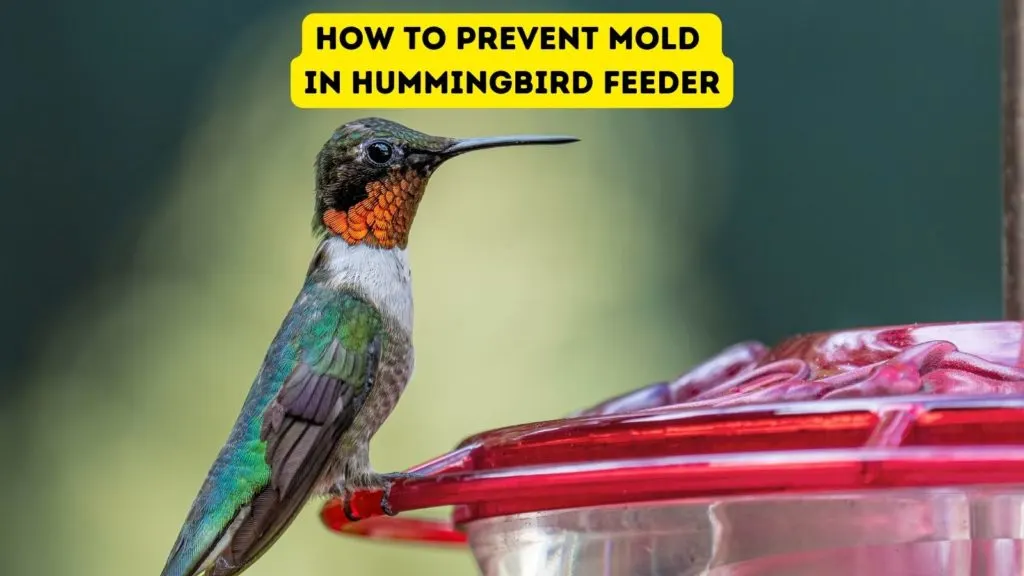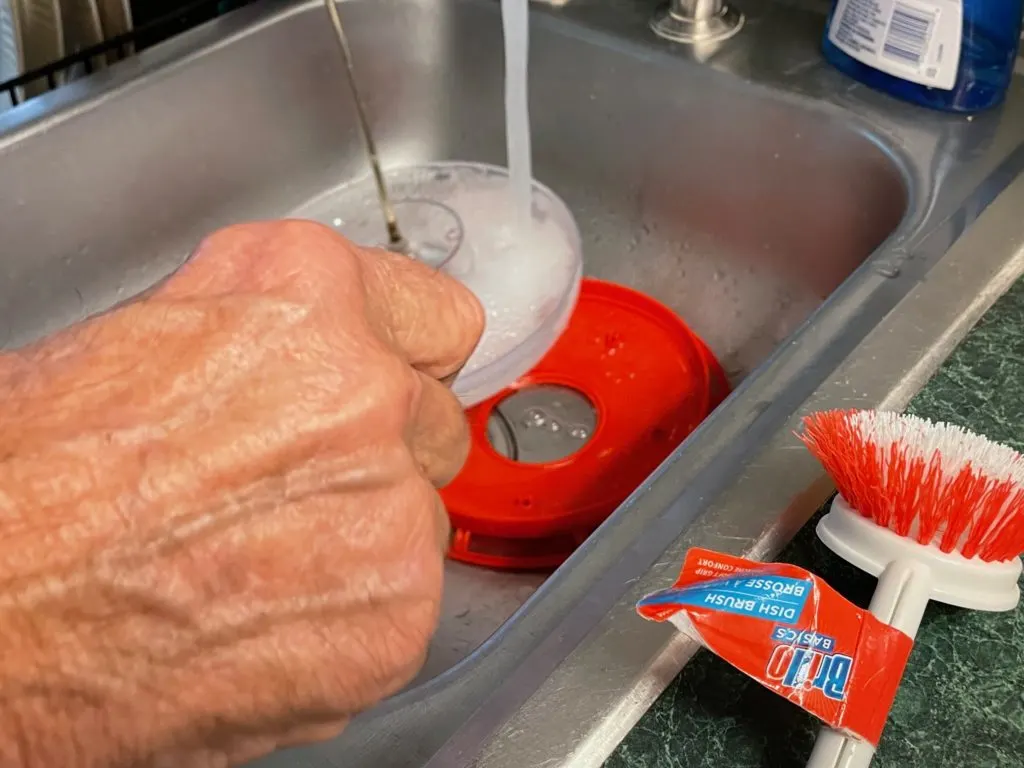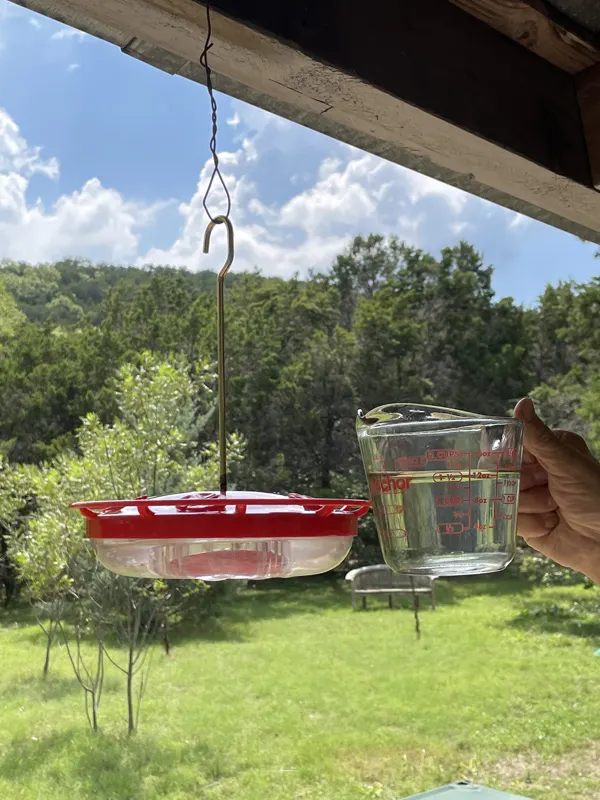Hummingbirds are a delightful sight in any garden, but maintaining a clean and healthy feeding environment for them is crucial. Mold in hummingbird feeders can be harmful to these tiny birds, so prevention is key. Here are some tips on how to prevent mold in a hummingbird feeder, including the often-overlooked aspect of feeder position.

Change the Nectar Frequently
Replace the nectar every two to three days, even if it doesn’t look like you need to! You’ll need to change the nectar even more frequently in hot weather.
Mold spores can develop quickly as nectar sits. This helps prevent fermentation and mold growth.
Only fill your feeder with the amount of nectar your hummingbirds will consume in a few days. This practice reduces waste and lessens the chance for mold to develop. If you make extra nectar, just store it in the refrigerator until the next feeder change!
Regular Cleaning

It’s best to clean the hummingbird feeder every time you wash it; at an absolute minimum, clean your feeder thoroughly at least once a week. We have multiple hummingbird feeders so we fill a clean feeder then bring in the dirty feeder for a good cleaning and air drying to help remove any chance of mold.
To clean the hummingbird feeder, use hot water and a mild detergent, and ensure to rinse it well to remove any soap residue. A bottle brush or a special feeder brush for the openings can help clean hard-to-reach areas.
For a deep clean if you are seeing signs of mold or if you are hearing reports of bird illness in your area, you can add a few drops of bleach (1 tsp per quart of water) or use a vinegar and water solution. Rinse thoroughly.
Pick an Easy to Clean Hummingbird Feeder
When it comes to hummingbird feeder designs, we’ve had them all! After a lot of trial and error, we’ve settled on flat platter-type hummingbird feeders. The entire top pops off for easy cleaning. (Another bonus is that the nectar and the opening are separated–so insects cannot reach the nectar.)
This is our flat feeder which has been very easy to clean:

Whatever style you choose, opt for feeders that come apart easily, with fewer nooks and crannies where mold can hide.
Hang the Feeder in Shade
The location of your feeder can significantly impact mold growth. Place the feeder in a shaded area. Excessive heat can cause the nectar to spoil faster, encouraging mold.
Remember, the health of the hummingbirds is paramount. By taking these steps, including careful consideration of the feeder’s position, you can provide a safe and mold-free feeding station for these beautiful birds.
More Posts You Might Like
How Big Are Baby Hummingbirds?
Can Hummingbirds Predict Hurricanes?
National Butterfly and Hummingbird Day
- 8 Letter Bird Names - August 14, 2024
- 7 Letter Bird Names - August 14, 2024
- 7 Birds Named After Famous People - July 23, 2024
